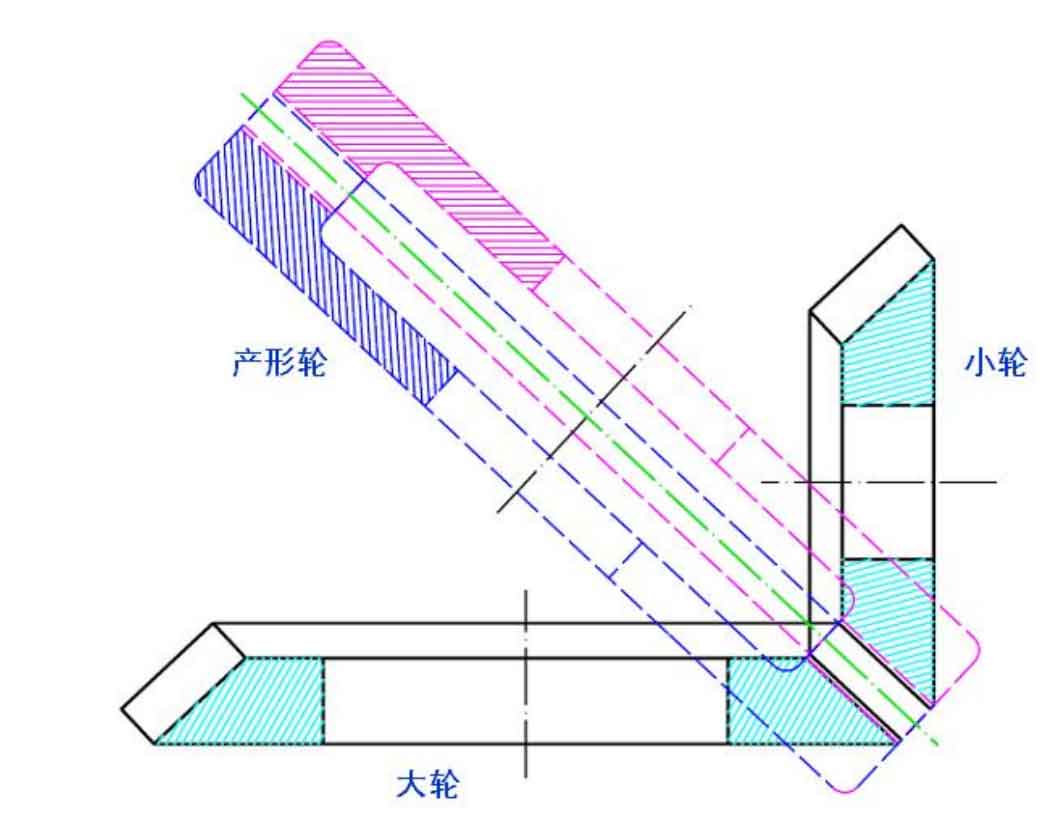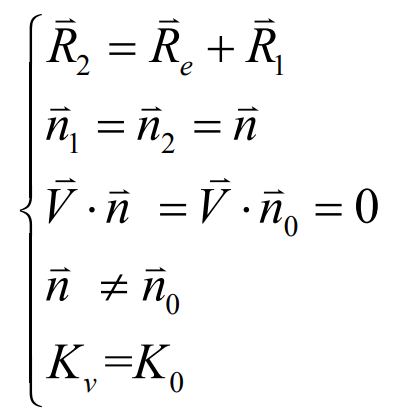The spiral bevel gear for face hobbing of spiral bevel gear generally adopts equal height tooth system, and its root cone, pitch cone and face cone are parallel. Therefore, the principle of indirect generation method can be used to ensure that the large and small tooth surfaces developed in this relative motion can mesh and drive according to the required transmission ratio. The basic idea is to use the same generating wheel to develop the large and small tooth surfaces respectively based on the conjugate meshing principle. As shown in the figure, in the development process, first use a profile wheel to mesh with the big wheel to develop the big gear tooth surface. The intersection angle of the installation shaft of the big wheel and the production wheel is the sum of the pitch cone angles of the two, and the root of the big gear tooth is processed at the same time as the tooth surface is developed. Then, without changing the axis of the generating wheel, rotate the generating wheel 180 degrees around its pitch line, make the generating gear face the small wheel and mesh with the small wheel. At this time, the pitch line of the forming wheel and the pitch line of the small wheel still coincide, and the tooth root of the small wheel can also be processed in the process of tooth profile development. Since the installation state of large and small wheels is not changed during the development of large and small wheels, the large and small wheels processed with the same profile wheel can also meet the line conjugate contact characteristics under the required installation position and transmission ratio.
As we all know, the node and pitch surface are the datum of all spiral bevel gear transmission and the key to the geometric design of spiral bevel gear pair. According to the relative motion theory of spiral bevel gear meshing theory, the pitch surface of spiral bevel gear is a rotating surface formed by the instantaneous relative spiral motion axis around the spiral bevel gear axis. For the spiral bevel gear pair with zero offset, its pitch surface is two cones tangent along the generatrix. For Hypoid Gears with non-zero offset, the pitch surface is a single leaf hyperboloid. However, it is inconvenient to design and process the pitch surface of spiral bevel gear with single leaf hyperboloid. Therefore, in its working area, the conical surface is used to replace the univalent hyperboloid as the nodal surface. However, at this time, the two cones are not tangent along the whole bus, but only tangent contact at one point, which is the node of the gear pair. Therefore, the geometric design of hypoid gear is more complex, which usually needs two processes: node pitch cone design and tooth geometric design.
When determining the node position of the quasi double curved surface and the relative installation state between the large and small wheels and the production wheel, it is necessary to ensure that the spiral bevel gear node meets the conjugate contact conditions, and at the same time, it is also necessary to ensure that the tooth surface will not become the conjugate boundary point at the node position. That is, the following equations need to be satisfied:


